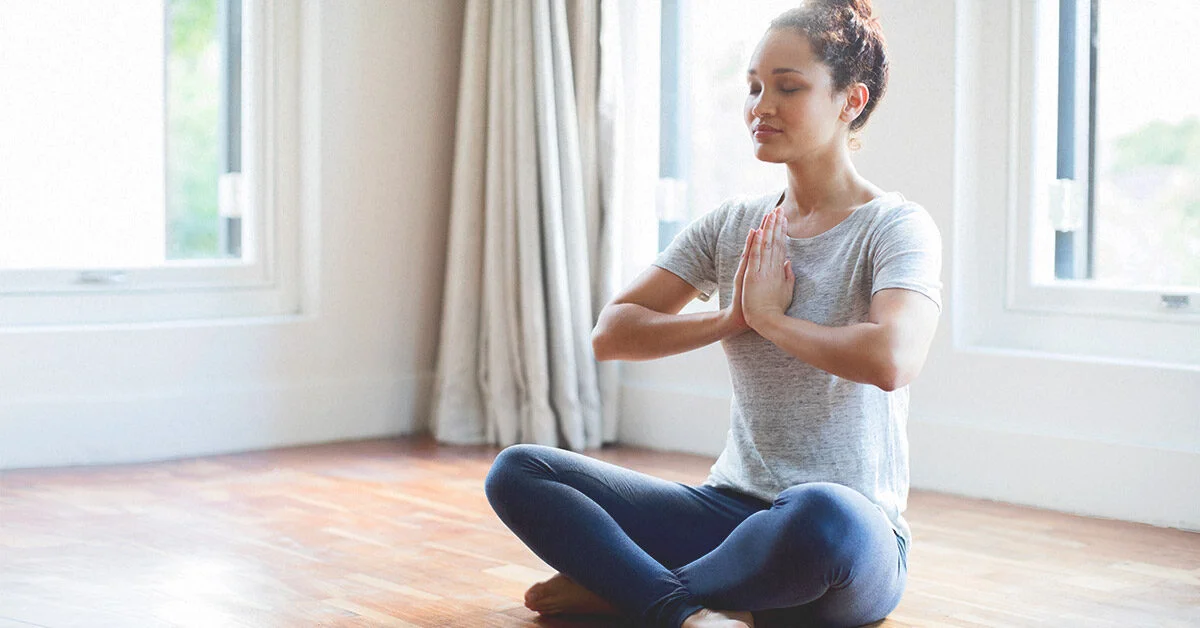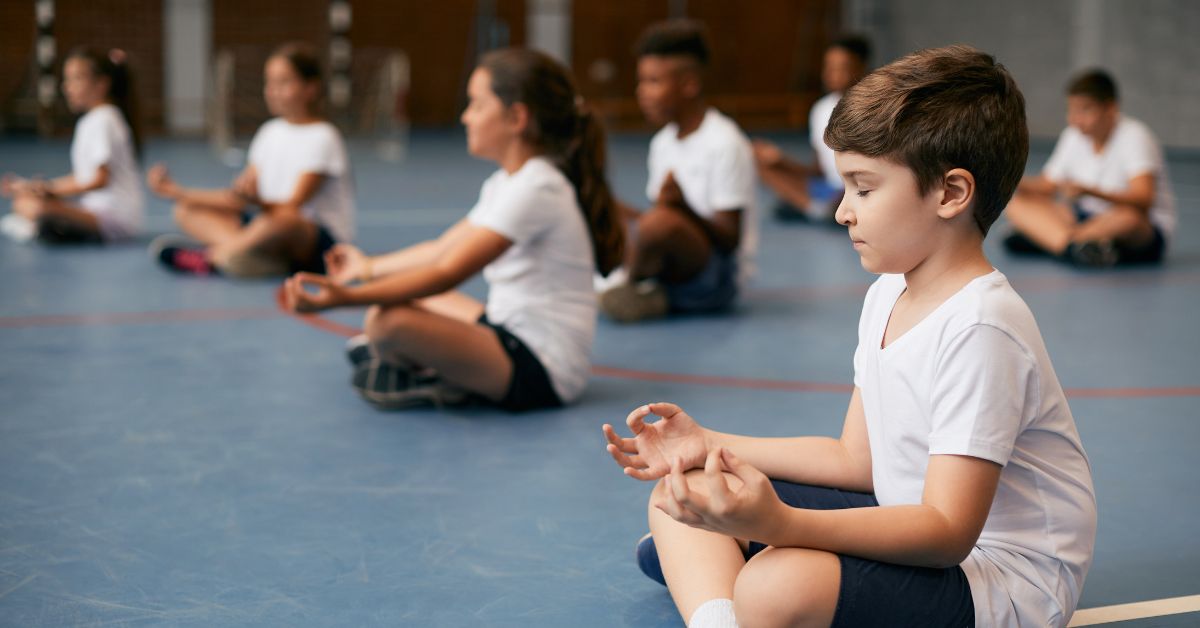Exercise Daily – Maintaining mental focus and concentration is becoming increasingly challenging in today’s fast-paced world. With numerous distractions and constant demands on our attention, finding clarity and concentration can feel like an elusive goal. Fortunately, yoga offers a powerful and effective solution to improve focus and concentration. Let’s explore various yoga practices, poses, and techniques that can help enhance your mental focus and concentration. Whether you’re a beginner or an experienced yogi, incorporating yoga into your routine can significantly benefit your cognitive abilities and bring a sense of calmness to your mind.
Benefits of Yoga for Concentration
Yoga, a holistic practice from ancient India, encompasses physical postures (asanas), breathing exercises (pranayama), and meditation techniques. It is known to have numerous benefits for both the body and mind. When it comes to concentration and mental focus, yoga offers the following advantages:
Calming the Mind: Yoga practice encourages you to focus on your breath and the present moment, helping to calm the mind and reduce unnecessary thoughts that hinder concentration.
Strengthening the Nervous System: The practice of yoga postures and breathing techniques helps to strengthen the nervous system, enhancing the brain’s ability to focus and concentrate.
Enhancing Awareness and Focus: Through mindful movement and meditation, yoga cultivates a heightened awareness and improves the ability to concentrate on a single task or object.
Reducing Stress and Anxiety: Yoga’s emphasis on deep breathing and relaxation techniques can significantly reduce stress and anxiety, creating a conducive environment for concentration.
Balancing Energy and Boosting Brain Power: Yoga balances the body’s energy centers, allowing for a smooth flow of prana (life force energy), enhancing brain function, and improving cognitive abilities.

Yoga Poses to Improve Focus and Concentration
Tree Pose (Vrikshasana)
The Tree Pose is a standing balance pose that requires focus and concentration to maintain stability. Stand tall with your feet together and shift your weight onto one leg. Place the sole of your other foot on the inner thigh or calf of the standing leg. Keep your hands in prayer at your heart center, or extend them overhead. Find a steady gaze point to enhance your focus and hold the pose for several breaths.
Eagle Pose (Garudasana)
The Eagle Pose is a seated posture that helps improve concentration and balance. Start by standing with your feet hip-width apart. Cross your right thigh over your left thigh, hooking your right foot behind your left calf if possible. Extend your arms straight in front of you and cross your left arm over your right, interlocking the palms. Focus your gaze on a fixed point and hold the pose for a few breaths before switching sides.
Warrior III (Virabhadrasana III)
Warrior III is a standing balance pose that requires focus, stability, and core strength. Begin in a standing position with your feet hip-width apart. Shift your weight onto your right foot and extend your left leg straight behind you, parallel to the ground. Reach your arms forward or place your hands on your hips. Engage your core and find a focal point to help you maintain balance. Hold the pose for several breaths before switching sides.
Child’s Pose (Balasana)
Child’s Pose is a relaxing and grounding posture that allows you to turn inward and recharge. Start on your hands and knees, then slowly lower your hips toward your heels while extending your arms. Rest your forehead on the mat or a block. Take deep breaths and allow your body to relax completely. Stay in this pose for a few minutes, focusing on your breath and releasing tension.
Seated Forward Bend (Paschimottanasana)
The Seated Forward Bend is a seated posture that stretches the entire back of the body, promoting relaxation and mental clarity. Sit on the floor with your legs extended in front of you. Inhale and reach your arms overhead, lengthening your spine. Exhale and hinge forward from your hips, reaching toward your feet. You can use a strap or hold onto your shins if you can’t reach your feet. Allow your body to surrender into the pose and hold for several breaths.
Pranayama and Meditation Techniques
Kapal Bhati Pranayama
Kapal Bhati is a powerful breathing technique that cleanses the mind and energizes the body. Sit in a comfortable position and take a deep breath in. Exhale forcefully through your nose while simultaneously pulling your abdomen towards your spine. Inhale passively and repeat the process for several rounds. This practice increases oxygen flow to the brain, improving mental clarity and focus.
Alternate Nostril Breathing (Nadi Shodhana Pranayama)
Alternate Nostril Breathing is a balancing breathing technique that helps harmonize the left and right hemispheres of the brain, promoting focus and concentration. Sit comfortably and place your left hand on your left knee, palm facing upward. Use your right hand to rest your index and middle fingers between your eyebrows. Close your right nostril with your right thumb and inhale through your left nostril. Then, close your left nostril with your ring finger and exhale through your right nostril. Continue this pattern, alternating the inhalation and exhalation between the nostrils. This practice helps bring clarity and balance to the mind.

Mudras for Concentration
Mudras, or hand gestures, can also enhance concentration and focus during yoga and meditation. Here are two mudras that are particularly beneficial for improving mental focus:
Chin Mudra
Chin Mudra is a simple hand gesture that connects the thumb and index finger while extending the other three fingers. This mudra represents unity and consciousness. Sit comfortably and place your hands on your knees with your palms facing upward. Gently touch the tip of your thumb to the tip of your index finger while extending the other fingers. Rest your hands on your thighs and allow your shoulders to relax. This mudra helps to calm the mind, improve concentration, and enhance mental clarity.
Dhyana Mudra
Dhyana Mudra, also known as the Meditation Mudra, is a hand gesture that promotes deep concentration and tranquility. Sit comfortably and place your hands on your lap, with the right hand resting on top of the left hand and palms facing upward. Touch the tips of your thumbs together, creating a gentle arch. Close your eyes and breathe deeply, allowing your body and mind to relax. This mudra helps to still the mind and cultivate a state of focused meditation.

Yoga Philosophy for Focus and Concentration
Yoga philosophy offers valuable insights and principles to support your journey toward improved focus and concentration. Here are a few key aspects to consider:
- One-pointedness of mind (Ekagrata): In yoga, cultivating a one-pointed mind is essential for concentration. By directing your attention to a single point or object, you can train your mind to remain focused and undisturbed by distractions.
- Practicing mindfulness (Dharana): Mindfulness involves being fully present and aware of your thoughts, actions, and surroundings. Practicing mindfulness on and off the mat can enhance your ability to concentrate and stay focused.
- Balancing effort and surrender (Abhyasa and Vairagya): Balancing effort and surrender is crucial in yoga and concentration practices. While putting in consistent effort and discipline, it’s also essential to cultivate a sense of detachment, letting go of attachment to results and outcomes.
- Cultivating inner stillness (Antar Mouna): Antar Mouna, or inner silence, is a meditation technique that involves observing and accepting thoughts and mental chatter without getting caught up in them. This practice helps quiet the mind and improve mental focus and concentration.
Benefits of Meditation for Students
Meditation is a practice that involves training the mind to focus and redirect thoughts. While it has been practiced for centuries as a spiritual and religious activity, it has gained popularity recently due to its numerous benefits for mental, emotional, and physical well-being. Students, in particular, can greatly benefit from incorporating meditation into their daily routines. Here are some key benefits of meditation for students:
Improved Focus and Concentration
One of the primary benefits of meditation is its ability to enhance focus and concentration. Regular meditation practice helps students develop a greater ability to stay present and pay attention to their studies. This increased focus can lead to improved academic performance and productivity.
Stress Reduction
Students often experience high-stress levels due to academic pressures, exams, and social expectations. Meditation provides an effective tool for managing stress by activating the body’s relaxation response and reducing the production of stress hormones. Regular meditation can help students feel calmer, more balanced, and better equipped to handle challenging situations.
Enhanced Emotional Well-being
Meditation cultivates mindfulness, which is the practice of being fully present and aware of one’s thoughts, emotions, and sensations without judgment. By developing mindfulness skills, students can better understand and regulate their emotions. This can improve emotional well-being, increase self-awareness, and better peer relationships.
Improved Memory and Cognitive Function
Research suggests that meditation positively impacts memory and cognitive function. Regular meditation practice has been shown to improve working memory, attention span, and information processing. Meditating students may experience enhanced learning abilities, better information retention, and improved problem-solving skills.
Increased Resilience and Mental Health
College and school life often present challenges, and students may face setbacks, failures, or disappointments. Meditation helps students cultivate resilience by teaching them how to respond to difficulties with a calm and balanced mindset. Moreover, regular meditation practice has been associated with reduced symptoms of anxiety, depression, and other mental health issues.
Better Sleep
Many students struggle with sleep problems, negatively impacting their overall well-being and academic performance. Meditation can promote better sleep by reducing stress and anxiety, quieting the mind, and promoting relaxation. Improved sleep quality can lead to increased energy levels, better focus, and improved daily cognitive function.
Increased Self-awareness and Personal Growth
Meditation encourages self-reflection and introspection, allowing students to understand themselves better. Through regular practice, students can gain insights into their thoughts, behaviors, and values, contributing to personal growth, self-acceptance, and improved decision-making.

Conclusion
Incorporating yoga into your routine can immensely improve mental focus and concentration. You can cultivate a calm and focused state of mind by practicing yoga poses, pranayama techniques, and mudras and integrating yoga philosophy into your mindset. Remember that consistency and patience are key, and with regular practice, you will gradually experience the positive effects of yoga on your mental clarity and concentration.
FAQs – Yoga for mental focus and concentration
Q: How long should I practice yoga for improved concentration?
A: It’s recommended to practice yoga for at least 20 to 30 minutes daily to experience improved concentration benefits. However, even shorter sessions can be beneficial if practiced consistently.
Q: Can I practice these techniques even if I’m a beginner?
A: Absolutely! Beginners can practice all the techniques mentioned. It’s important to start slowly and listen to your body. If any pose or technique feels uncomfortable or causes pain, modify or skip it. Gradually increase the duration and intensity of your practice as you become more comfortable and experienced.
Q: Can yoga help with other aspects of mental well-being?
A: Yoga is known to positively impact various aspects of mental well-being. In addition to improving concentration and focus, it can help reduce stress, anxiety, and depression, enhance mindfulness and self-awareness, promote relaxation and better sleep, and increase overall emotional balance and resilience.
Q: Can I combine yoga with other activities to improve concentration?
A: Absolutely! Yoga can complement other activities that promote mental focus and concentration. For example, you can incorporate yoga into your study routine by taking short breaks to practice poses or breathing exercises. Additionally, combining yoga with activities like meditation, journaling, or listening to calming music can create a more holistic approach to improving concentration and focus.
Q: Should I consult a yoga instructor for concentration before starting a yoga practice?
A: It’s generally a good idea, especially if you’re new to yoga or have any specific health concerns. A qualified yoga instructor can guide you in proper alignment, offer modifications, and ensure you practice safely. They can also provide personalized recommendations based on your individual needs and goals.




